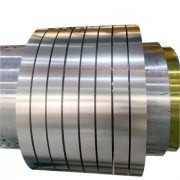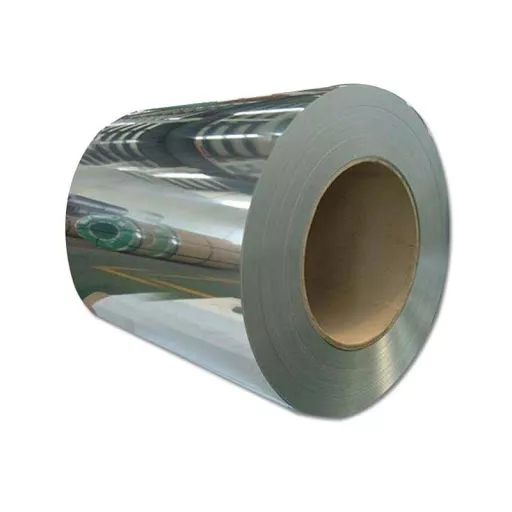
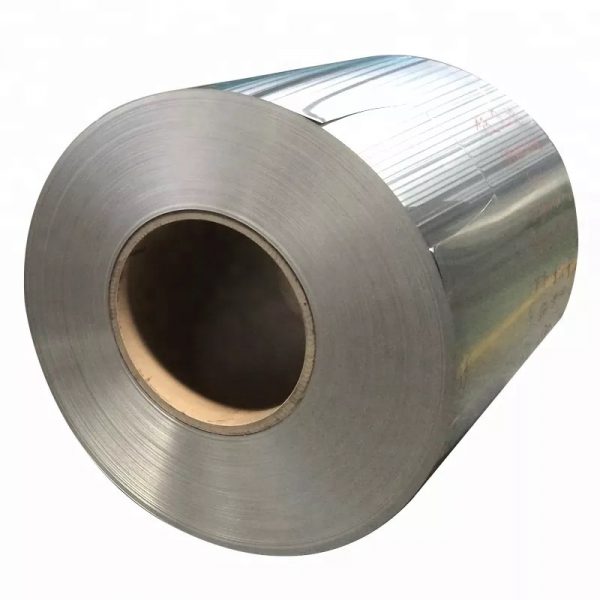
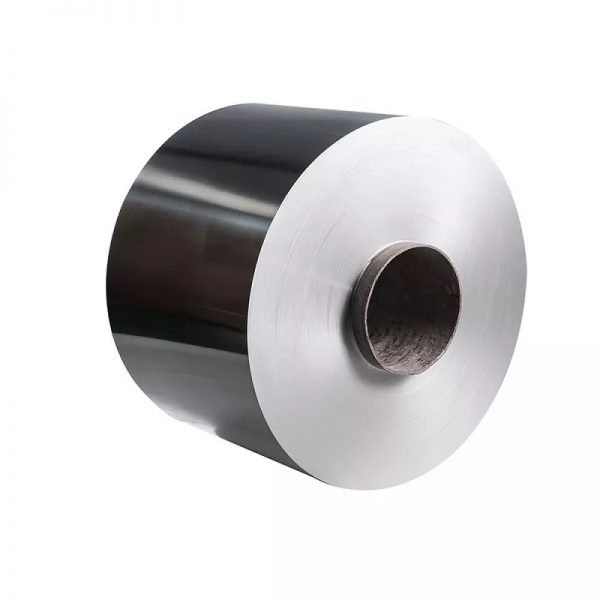
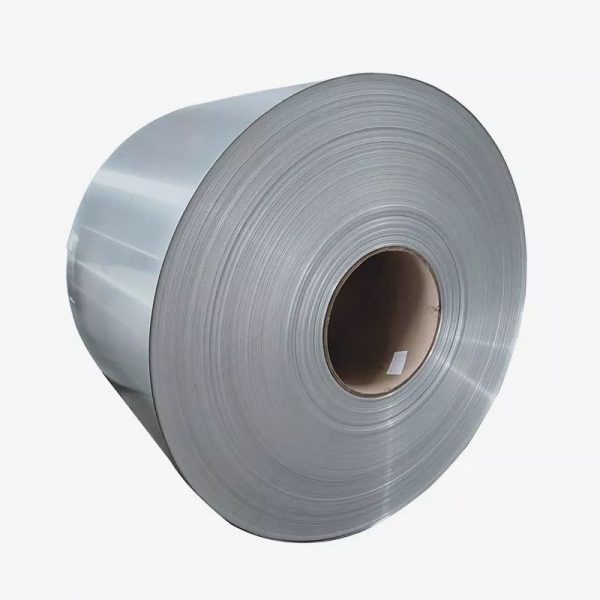
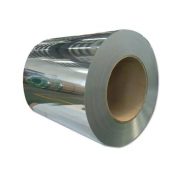
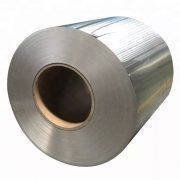
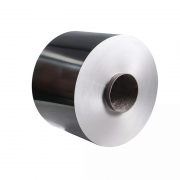
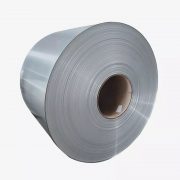
Titanium spoelen
Vanwege de slechte thermische geleidbaarheid van puur titanium, De emulsie met een goed smerend effect en uitstekende koelprestaties is vereist in het walsproces, en de rolsnelheid mag niet te hoog zijn, om de hoge temperatuur van puur titanium te voorkomen en het fenomeen van "sticking roller" te veroorzaken, en "plakrol" resulterend in een ruw oppervlak van titanium en slechte kwaliteit. Het resterende water en de olie op het oppervlak van de titaniumstrip ontleden tijdens het gloeiproces, die de partiële zuurstofdruk in de oven beïnvloedt en ervoor zorgt dat de ontledingsreactie in de tegenovergestelde richting verloopt, oxidatie op het oppervlak van de titaniumstrip en het beïnvloeden van de gloeikwaliteit. Omdat titaniumstrip gloeit voordat het oppervlak van de plaat volledig wordt ontvet, gereinigd en gedroogd. De ontvettingssnelheid van titaniumstrip is over het algemeen 20 m/min, en de snelheid wordt na het ontvetten aangepast aan de oppervlaktekwaliteit van de titaniumstrip. Rechttrekken is om de vlakheid van de productplaat te garanderen.
- Beschrijving
- Specificaties
- Onderzoek
Manufacturing process
Cold rolled titanium coil due to different production processes (or finished product surface) generally divided into cold rolled pickling surface titanium coil and cold rolled glossy titanium coil.
The manufacturing process of cold rolled pickling surface titanium coil of XRUN is: sponge titanium — melting — forging — Warm walsen — Warmtebehandeling — shot blasting — hot rolled pickling white roll — Koudwalsen — Warmtebehandeling — shot blasting — pickling — edge cutting — inspection — cold rolled pickling white roll — packing and storage.

production process
In the production process, because the product is rolled twice, the oxide scale will be produced. Two heat treatment and shot blasting pickling are the treatment of the oxide scale on the surface of the product, so as to better ensure the quality of the product. Cold rolled pickling surface titanium coil is generally used in aerospace, industry and marine engineering. Compared with the former, cold rolled glossy titanium coil is more widely used. Similarly, there are two more steps in the production process of cold rolled titanium coil with glossy surface than pickling surface: degreasing annealing and straightening.
Vanwege de slechte thermische geleidbaarheid van puur titanium, De emulsie met een goed smerend effect en uitstekende koelprestaties is vereist in het walsproces, en de rolsnelheid mag niet te hoog zijn, om de hoge temperatuur van puur titanium te voorkomen en het fenomeen van "sticking roller" te veroorzaken, en "plakrol" resulterend in een ruw oppervlak van titanium en slechte kwaliteit. Het resterende water en de olie op het oppervlak van de titaniumstrip ontleden tijdens het gloeiproces, die de partiële zuurstofdruk in de oven beïnvloedt en ervoor zorgt dat de ontledingsreactie in de tegenovergestelde richting verloopt, oxidatie op het oppervlak van de titaniumstrip en het beïnvloeden van de gloeikwaliteit. Omdat titaniumstrip gloeit voordat het oppervlak van de plaat volledig wordt ontvet, gereinigd en gedroogd. De ontvettingssnelheid van titaniumstrip is over het algemeen 20 m/min, en de snelheid wordt na het ontvetten aangepast aan de oppervlaktekwaliteit van de titaniumstrip. Rechttrekken is om de vlakheid van de productplaat te garanderen.
Product parameters
| Product | Specificatie(Mm} | Graad | Standaard | Treksterkte | Vloeigrens | Verlenging |
| pickling surface | Breedte(1.0~4.0) x (50~1200) x L | GR1/
GR2/ GR3/ GR4 |
ASTM B265 ASME SB265 |
≥240/
≥345/ ≥450/ ≥550 |
138~310/
275~450/ 380~550/ 483~655 |
≥24/
≥20/ ≥18/ ≥15 |
| glossy surface | Breedte(0.2~3,0) x (50~1200) x L |
The titanium coil is mainly used as a container for heating and cooling. titanium coil fixation is divided into two kinds of detachable and non-detachable, This depends on the medium's corrosion of the titanium coil. But mainly based on removable type, convenient maintenance and cleaning of titanium coil.
Application features
Excellent corrosion resistance in many media
Smooth surface, clean layer
Lage dichtheid, high strength and light weight
Lage dichtheid, hoge specifieke sterkte
The density of metallic titanium is 4.51g/cm3, which is higher than that of aluminum and lower than that of steel, koper, and nickel, but the specific strength is at the top of the metal.
Corrosiebestendigheid
Titanium is a very active metal with a low equilibrium potential and a high tendency for thermodynamic corrosion in media. Echter, titanium is actually very stable in many media. For example, titanium is resistant to corrosion in media such as oxidative, neutral and weak reducibility. This is because titanium and oxygen have a great affinity. In air or oxygen-containing medium, a dense, strong and inert oxide film is formed on the surface of titanium to protect the titanium matrix from corrosion. Even if it is due to mechanical wear, it will quickly heal or regenerate. This shows that titanium is a metal with a strong tendency to passivation. The oxide film of titanium below the temperature of 315°C always maintains this characteristic.
In order to improve the corrosion resistance of titanium, surface treatment technologies such as oxidation, electroplating, plasma spraying, ion nitriding, ion implantation, and laser processing have been studied. Titanium oxide film played a role in enhancing protection and obtaining desired corrosion resistance. A series of corrosion-resistant titanium alloys such as titanium-molybdenum, titanium-palladium, and titanium-molybdenum-nickel have been developed to meet the needs of metal materials in the production of sulfuric acid, hydrochloric acid, methylamine solution, high-temperature wet chlorine, and high-temperature chloride. Titanium-32-molybdenum alloys are used in titanium castings. Titaan-0.3 molybdenum-0.8 nickel alloys are used in environments where crevice corrosion or pitting corrosion frequently occurs. Titaan-0.2palladium alloys were used locally in titanium equipment, and good results were obtained.
Good heat resistance
The new titanium alloy can be used long-term at 600 °C or higher.
Low temperature resistance
Low temperature titanium alloy represented by titanium alloys TA7 (Ti-5Al-2.5Sn), TC4 (Ti-6Al-4V) and Ti-2.5Zr-1.5Mo, etc.Its strength increases with decreasing temperature, but the plasticity changes are not large.It maintains good ductility and toughness at -196-253°C and avoids cold brittleness. It is an ideal material for cryogenic vessels and tanks.
Strong anti-damping performance
After metal titanium is subjected to mechanical vibration and electric vibration, its own vibration decay time is the longest compared with steel and copper metal. The use of this property of titanium can be used as a tuning fork, a medical ultrasonic vibrator vibration element, and an advanced sound speaker vibration film.
Non-magnetic, niet-toxisch
Titanium is a non-magnetic metal, it will not be magnetized in a large magnetic field, non-toxic and has good compatibility with human tissues and blood, so it is used by the medical community.
Tensile strength is close to its yield strength
This property of titanium shows that the yield strength ratio (tensile strength/yield strength) is high, indicating that the metal titanium material is poor in plastic deformation during forming. Since the ratio of the yield limit of titanium to the elastic modulus is large, the resilience of titanium when molded is large.
Good heat transfer performance
Although the thermal conductivity of titanium metal is lower than that of carbon steel and copper, due to the excellent corrosion resistance of titanium, the wall thickness can be greatly reduced, and the heat exchange mode between the surface and steam is droplet condensation, which reduces the thermal group. Titanium surface without scaling can also reduce the thermal resistance, so that the heat transfer performance of titanium is significantly improved.
Low modulus of elasticity
The modulus of elasticity of titanium is 106.4 GMPa at room temperature, which is only 57% of steel.
Suction performance
Titanium is a chemically very reactive metal that reacts with many elements and compounds at high temperatures. Titanium inhalation mainly refers to reaction with carbon, waterstof, nitrogen, and oxygen at high temperatures.
Materials
Can be divided into: TA1 [Content 99,6], TA2 [Content 99,5], TA9 [Titanium Palladium Alloy], TA10 [Ti-Mo-Ni alloy
Titaan
The density of metallic titanium is 4.51g/cm3, which is higher than that of aluminum and lower than that of steel, koper, and nickel, but the specific strength is at the top of the metal. Corrosiebestendigheid, titanium is a very active metal, its equilibrium potential is very low, the tendency of thermodynamic corrosion in the medium. Echter, titanium is actually very stable in many media. For example, titanium is resistant to corrosion in media such as oxidative, neutral and weak reducibility. This is because titanium and oxygen have a great affinity. In air or oxygen-containing medium, a dense, strong and inert oxide film is formed on the surface of titanium to protect the titanium matrix from corrosion. Even if it is due to mechanical wear, it will quickly heal or regenerate. This shows that titanium is a metal with a strong tendency to passivation. The oxide film of titanium below the temperature of 315°C always maintains this characteristic. In order to improve the corrosion resistance of titanium, surface treatment technologies such as oxidation, electroplating, plasma spraying, ion nitriding, ion implantation, and laser processing have been studied. Titanium oxide film played a role in enhancing protection and obtaining desired corrosion resistance. A series of corrosion-resistant titanium alloys such as titanium-molybdenum, titanium-palladium, and titanium-molybdenum-nickel have been developed for the production of sulfuric acid, hydrochloric acid, methylamine solution, high-temperature wet chlorine, and high-temperature chlorides, and for metal materials. Titanium castings use titanium-32 molybdenum alloys. Titaan-0.3 molybdenum-0.8 nickel alloys are used for crevice corrosion or pitting environments. Titaan-0.2 palladium alloys are used locally for titanium equipment. effect. Good heat resistance The new titanium alloy can be used long-term at 600°C or higher. Low-temperature-resistant titanium alloys such as titanium alloys TA7 (Ti-5Al-2.5Sn), TC4 (Ti-6Al-4V), and Ti-2.5Zr-1.5Mo, enz., whose low-temperature titanium alloys increase in strength as the temperature decreases, Plasticity is not great. It maintains good ductility and toughness at -196-253°C and avoids cold brittleness. It is an ideal material for cryogenic vessels and tanks.
Gerelateerde producten
-
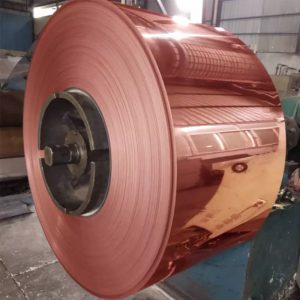
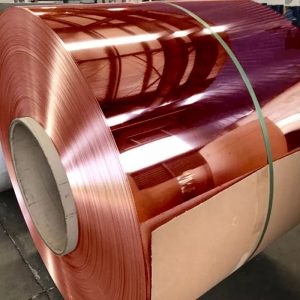 Lees meerSnel overzicht
Lees meerSnel overzichtKoperen spoelen
Het lijkt misschien dat een koperen spoel een eenvoudig stuk opgerolde draad is dat kan worden opgewonden en gebruikt. Zoals bij elke vorm van industrieel product, Koperen spoelen moeten nauwkeurig worden ontworpen om in een toepassing te passen. Het wikkelproces moet nauwkeurig worden voltooid om de juiste afstand tussen de draden en de diameter van de opening te garanderen.
Elk product dat koperen spoelen gebruikt, vereist dat een bepaald aantal windingen wordt gemaakt om de juiste hoeveelheid weerstand te bieden. Onnauwkeurige berekeningen kunnen leiden tot inefficiëntie en mogelijk falen van de spoel of het apparaat. Om deze reden, garanderen de engineers van Metal Associates dat ze de specificatie van een toepassing nauwkeurig hebben onderzocht, zodat de diameter, Afstand, Dikte van de draad, en het aantal windingen komt exact overeen met het ontwerp van het product waar de koperen spoel zal worden gebruikt.
-
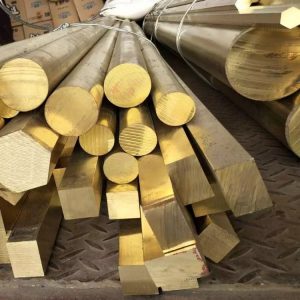
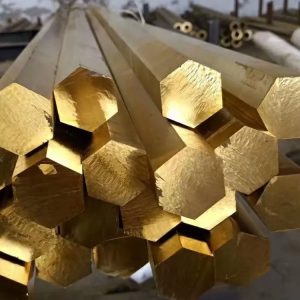 Lees meerSnel overzicht
Lees meerSnel overzichtMessing staaf
-
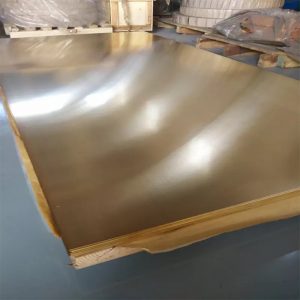
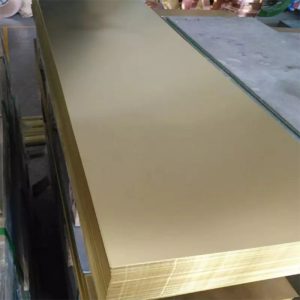 Lees meerSnel overzicht
Lees meerSnel overzichtMessing plaat
Messing plaat op basis van elektrolytisch koper, Zink en sporenelementen als grondstof, door verwerking door ingot, Warm walsen, Koudwalsen, Warmtebehandeling, Reiniging van het oppervlak, stek, afwerking, en dan inpakken. Prestaties van materiaalprocessen, plasticiteit, Mechanische eigenschappen, corrosiebestendigheid, Prestaties en goed tin.
Het is op grote schaal gebruikt in elektrische, Automotive, communicatie, hardware, Decoratie en andere industrieën.
-
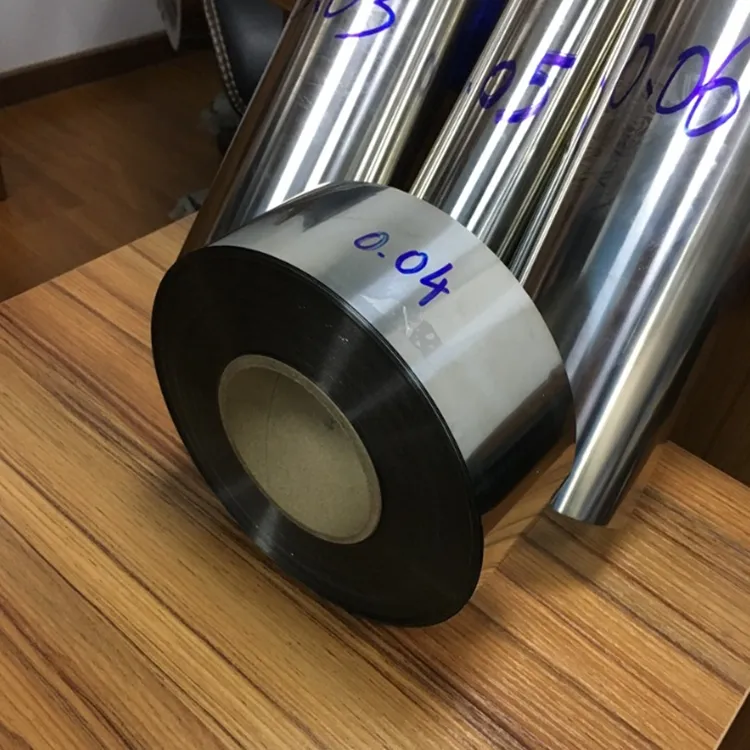
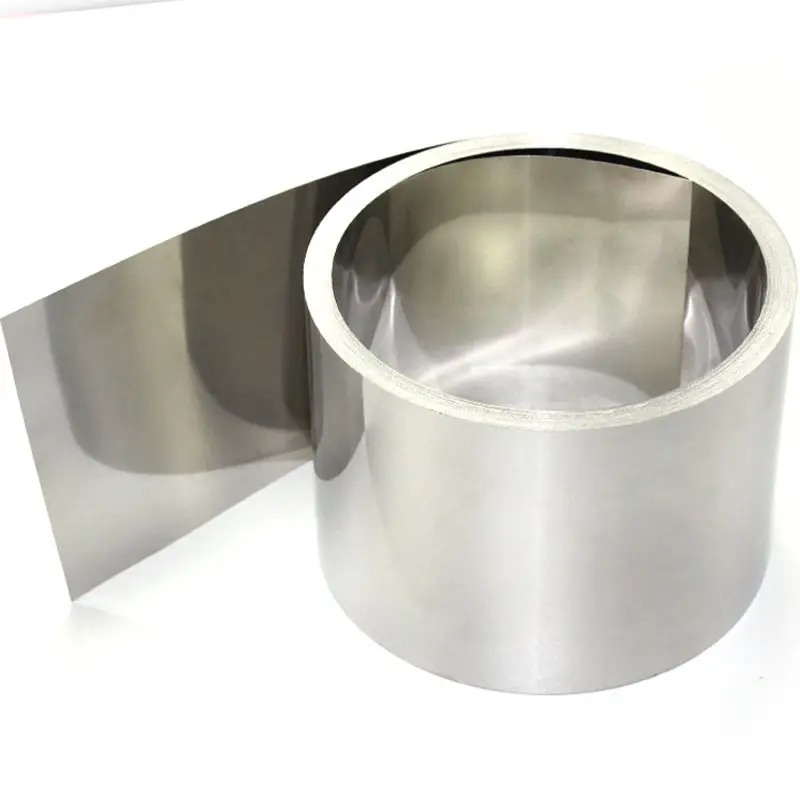 Lees meerSnel overzicht
Lees meerSnel overzichtRoestvrij staalfolie
Roestvrijstalen folies zijn dunne stroken roestvrij staal die minder zijn dan 0.2 mm in dikte en minder dan 300 mm in de breedte.
Roestvrijstalen folies bieden verschillende voordelen, inclusief chemische stabiliteit, hoge sterkte-gewichtsverhouding, elektrische isolatie en corrosiebestendigheid.
Roestvrijstalen folie wordt gebruikt bij de productie van warmtewisselaars, condensatoren en brandstofcellen; evenals in medische apparatuur en voedselverwerkende machines.
Rvs folies zijn een veelzijdig materiaal met vele voordelen. De hoge corrosiebestendigheid, Goede thermische en elektrische geleidbaarheid en de vervormbaarheid maken het een uitstekende keuze voor een breed scala aan toepassingen.
Rvs folie is verkrijgbaar in verschillende kwaliteiten. Deze omvatten austenitische reeksen, ferritische serie, martensitische serie, duplex en super duplex serie. Elke kwaliteit heeft verschillende legeringselementen die bijdragen aan de eigenschappen van de folie.
De meest voorkomende soorten roestvrijstalen folies zijn 304 en 316. Deze kwaliteiten worden geleverd in diktes variërend van 0,009 mm tot 0,3 mm. Andere soorten roestvrij staalfolie zijn ook beschikbaar op aanvraag, waaronder: 409, 430 en duplex 2205.
-
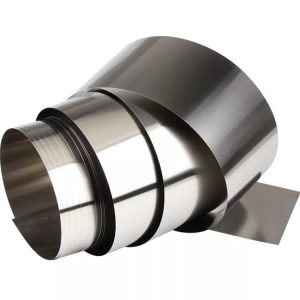
 Lees meerSnel overzicht
Lees meerSnel overzichtTitanium folie
Titaniumfolie is een titanium plaat, strip, rol of plaat met een dikte van minder dan of gelijk aan 0,2 mm. De maximale breedte van gewalste titaniumfolie is ongeveer 600mm.
De breedte van de titaniumfolie wordt gesneden volgens de eisen van de gebruiker. Maar hoe breder de productie, hoe hoger de productiviteit.
Titaniumfolie wordt voornamelijk gebruikt in de lucht- en ruimtevaart, navigatie, kernmogendheid, elektronica, chemische industrie, petroleum, precisieproductie, medisch, farmaceutisch en ander aspect. -
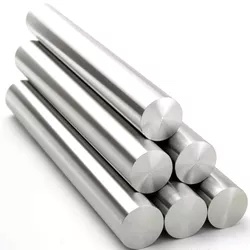
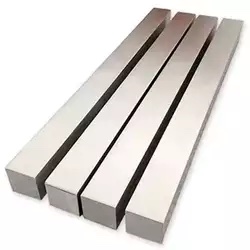 Lees meerSnel overzicht
Lees meerSnel overzichtRoestvrije staaf
Een roestvrijstalen stafmateriaal wordt vaak gebruikt voor productielijnmachines of in andere industriële omgevingen waar duurzaamheid vereist is. Roestvrijstalen ronde staaftypes zijn te vinden in veel verschillende vormen, zoals zeshoek, vierkant, of ronde staven. Roestvrij stafmateriaal is een materiaal dat niet corrosief is, Corrosiebestendig, en duurzaam. Het kan worden gebruikt in verschillende industrieën, zoals de auto-industrie, Aerospace, constructie, en productie.
Roestvrijstalen stafmateriaal is het type roestvrij staal van de hoogste kwaliteit in de industrie. Ze zijn gemaakt van hoogwaardige materialen waardoor ze bestand zijn tegen corrosie en andere omgevingsomstandigheden. Het roestvrijstalen stafmateriaal heeft ook een grotere treksterkte dan andere soorten roestvrij staal.
Roestvrijstalen ronde staafproducten of ronde staven worden vaak gebruikt voor het vervaardigen van producten zoals autovelgen, motorfiets velgen, Fiets velgen, en meer. Dit soort staven wordt meestal gemaakt door platen roestvrij staal op te rollen tot lange buizen voordat ze aan de uiteinden aan elkaar worden gelast om ronde staven of ronde staven te maken die in kleinere stukken kunnen worden gesneden
-
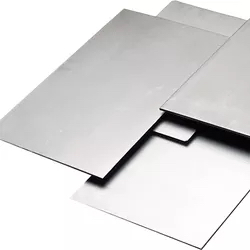
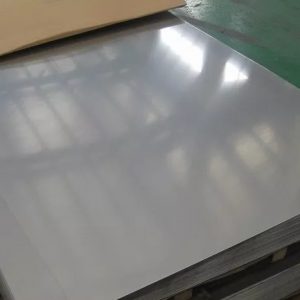 Lees meerSnel overzicht
Lees meerSnel overzichtTitanium Sheet
Titanium plate has high corrosion resistance and specific strength, and is widely used in electric power, chemische industrie, aviation parts, building materials, sports equipment, medical and other fields and is still expanding. From the point of view of use and manufacturing technology, titanium plate has low price, high performance, multiple functions, and easy production.
Als u vragen heeft,neem dan gerust contact op met sales@grandsteeltube.com
-
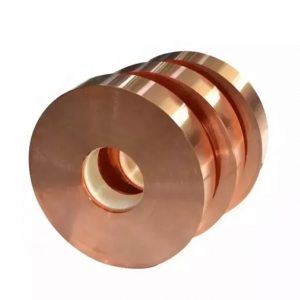
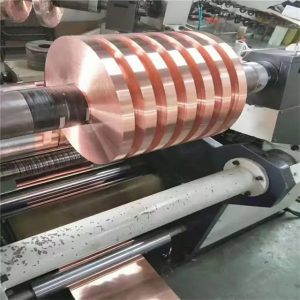 Lees meerSnel overzicht
Lees meerSnel overzichtKoperen strips
Koperen strips hebben een hoge elektrische en thermische geleidbaarheid, Daarom zijn koperen strips het beste voor transformatorwikkeling.
Wat meer is, Koperen strips brengen warmte effectiever over dan andere metalen strips.
Koperen strips zijn kneedbaarder en hebben een hoge treksterkte. Corrosiebestendigheid, hoge mate stabiliteit, en warmteafvoer van koperen strips zijn superieur aan andere metalen.
Koperstrips worden meestal gebruikt in de elektrische en elektronische sector omdat koper niet-magnetisch en vonkvrij is. Koperstrips worden meestal gebruikt in warmtewisselaars, transformatoren wikkelen, Condensatoren, en bliksemafleiders.
De dikte van de koperstrook varieert van 0,03 mm tot 3,0 mm. Koperen strips kunnen worden vervaardigd in verschillende breedtes en diktes volgens de eisen van de klant.
Als u vragen heeft, neem dan gerust contact op met sales@grandsteeltube.com
-
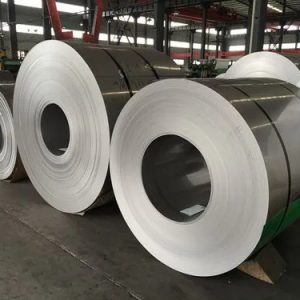
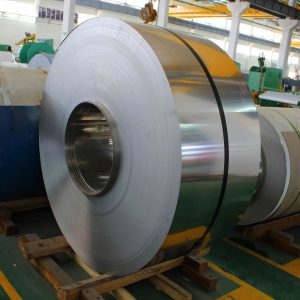 Lees meerSnel overzicht
Lees meerSnel overzichtRoestvrijstalen spoel
Roestvrijstalen spoel kan worden onderverdeeld in koudgewalste roestvrijstalen spoel en warmgewalste roestvrijstalen spoel volgens verschillende productieprocessen.
Volgens de materialen, Ze kunnen worden onderverdeeld in austeniet, Martensiet, Ferriet en duplex.
Roestvrijstalen spoelen voor algemeen gebruik worden vaak weergegeven door digitale symbolen.
Er is 200 reeks, 300 reeks, 400 serie en duplex-serie.
304, 304L, 316 en 316L roestvrijstalen spoelen zijn de meest populaire en economische kwaliteiten van roestvrij staal.
RVS 304/304L coils en RVS 316/316L coils, Samen met duplex roestvrijstalen spoelen bieden ze een goede corrosieweerstand tegen vele chemische omgevingen en maritieme en industriële blootstellingen.
-
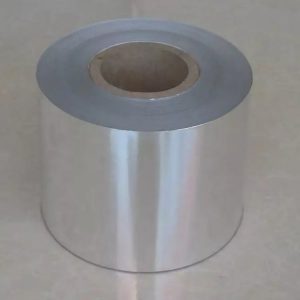
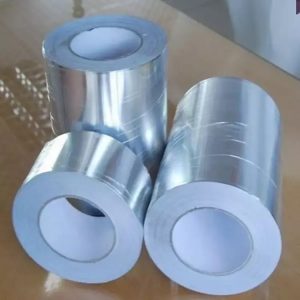 Lees meerSnel overzicht
Lees meerSnel overzichtAluminiumfolie
Aluminiumfolie is aluminium bereid in dunne metalen bladen met een dikte van minder dan 0,2 mm (7.9 Mils); dunnere meters tot 4 Micrometers worden ook vaak gebruikt. Standaard huishoudfolie is typisch 0.016 Mm (0.63 Mils) dik, en heavy-duty huishoudfolie is typisch 0.024 Mm (0.94 Mils). En de airconditionerfolie kan dunner zijn dan 0,0047 mm, en sommige voedselfolie dunner dan 0,002 mm. De folie is buigzaam en kan gemakkelijk om voorwerpen worden gebogen of gewikkeld. Dunne folies zijn kwetsbaar en worden soms gelamineerd met andere materialen zoals plastic of papier om ze sterker en bruikbaarder te maken. Het wordt industrieel gebruikt voor verschillende doeleinden, inclusief verpakking, Isolatie en transport. Thuis, Mensen gebruiken aluminiumfolie voor het bewaren van voedsel, om bakoppervlakken te bedekken en om voedsel in te pakken, zoals vlees, om te voorkomen dat ze vocht verliezen tijdens het koken.
- DIN2391 Precisie Stalen Buis
- EN10305-1/4 Precisie stalen buis
- EN10305-2/3/5/6 Precisiebuizen
- SAE-serie precisiebuizen
- ISO8535-1 brandstofinjectiebuis
- Single/Doulbe Wand Bundy Tube
- Ketel & Druk stalen buizen
- Naadloze geslepen /SRB stalen buis
- Roestvrij capillaire stalen buizen
- Naadloze roestvrije buizen & Doedelzak
- Gelaste roestvrije buizen & Doedelzak
- Injectie & Controle lijn buizen
- Nikkel legering buizen & Doedelzak
- Non-ferro capillaire buizen
- Aluminium buizen & Doedelzak
- Messing buizen & Doedelzak
- Koperen buizen & Doedelzak
- Titanium buizen & Doedelzak
- Geëxtrudeerde/gelaste vinbuis
- Non-ferro precisiebuis
- Speciaal gevormde stalen buizen
- Metallic spoel/folie/blad/strip

